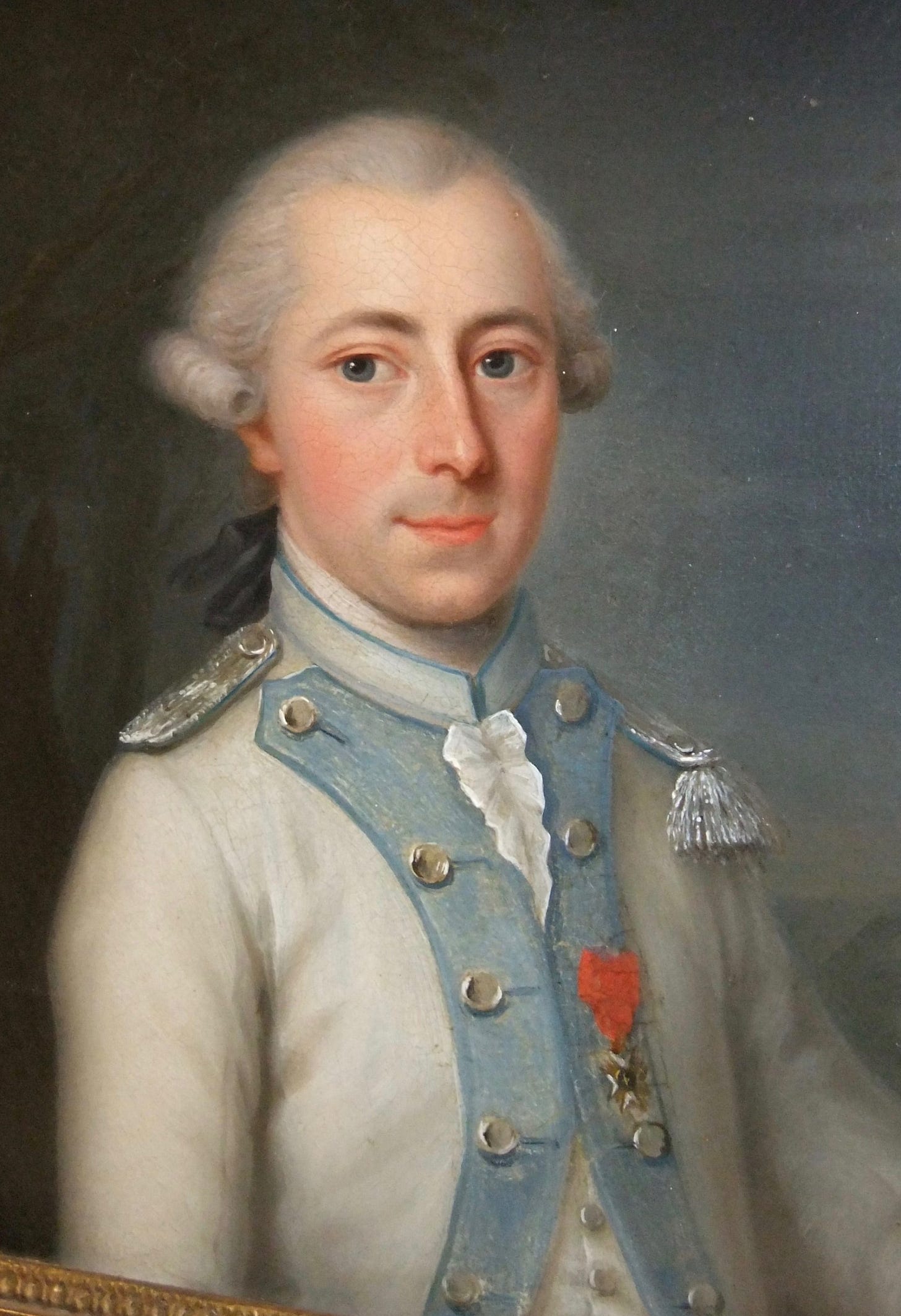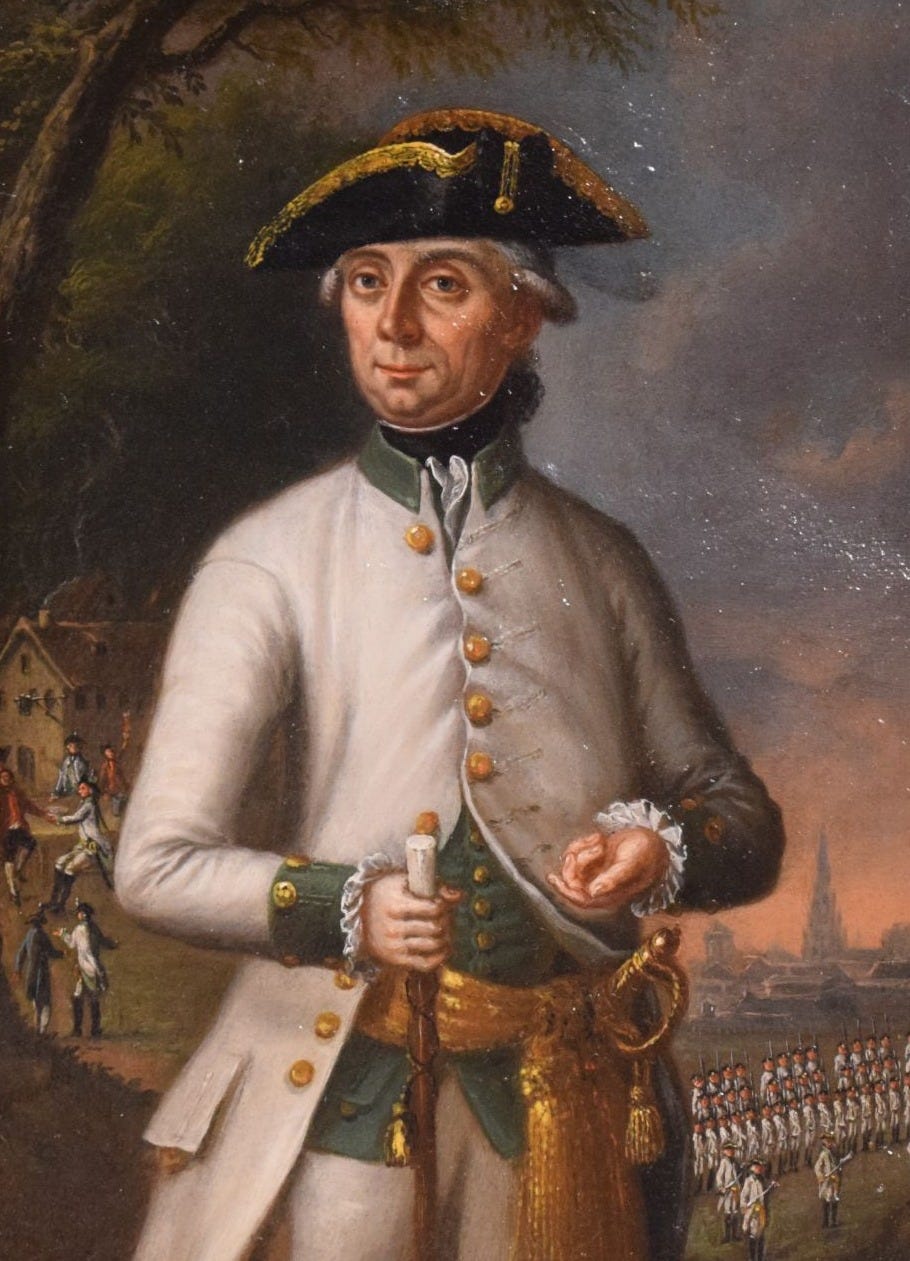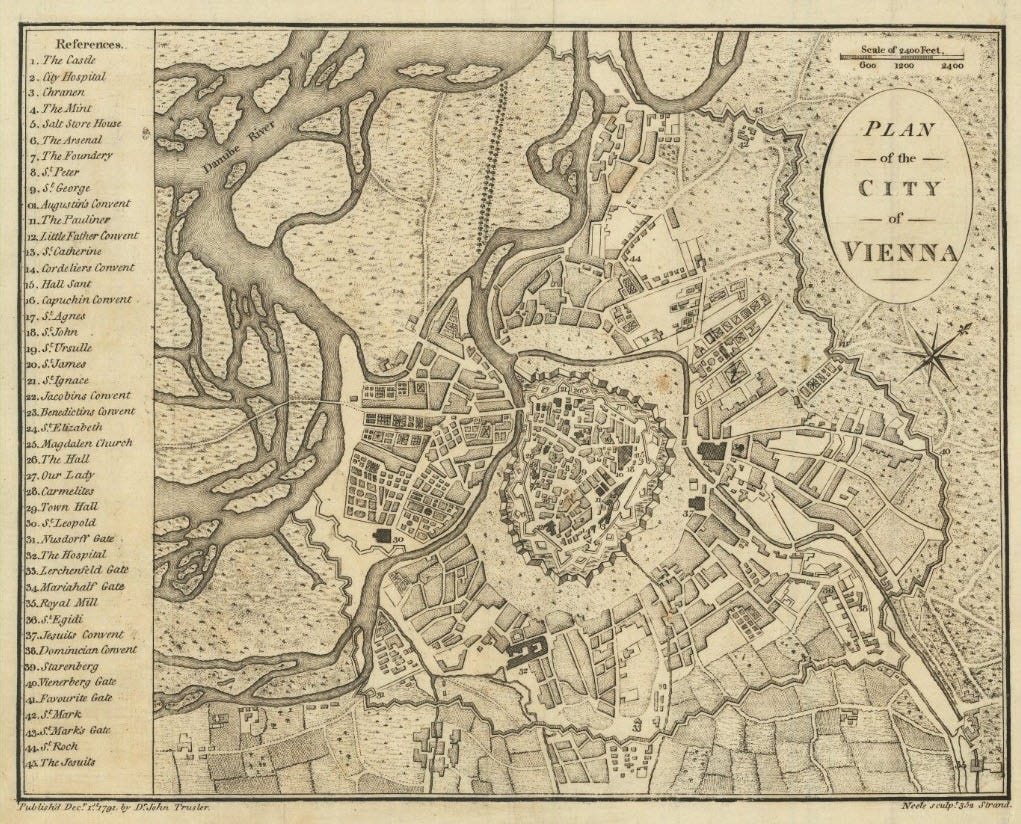Welcome to Our Belated Past, your monthly-ish dose of historical musings. If you enjoy what you read and want some more, feel free to check out my book, Lemuria: A True Story of a Fake Place, and why not go ahead and order my brand-new book, Raising Philadelphia: The Making of America’s First Great City.
Here at Our Belated Past, I don’t want to deliver to you the same ol’, regurgitated weird historical stories. No, I aim to bring you NEW, weird historical stories. Dig into obscure little corners of our collective past to dredge up only the most thought-provoking, engrossing stories. And this story encompasses that commitment.
A big fat content warning at the top here. I will be discussing some super gross stuff involving bodily fluids. So, if that creeps you out or you find it too disgusting, you may want to skip this jawn and patiently wait for the next Our Belated Past.
So I was all geeked out to write about Atlantis and possible Pythagorean influence on the development of that lost city/continent. As I read about Pythagoras and the Pythagoreans, I kept coming across their influence on Plato, via Archytas, that pops up in Plato’s dialogue, Timaeus. That dialogue was hugely influential and became the foundation for the natural sciences for nearly two centuries. The other thing that Timaeus did was of course introduce the world to Atlantis. Plato would attempt to tell the fuller Atlantis story in his next (and only incomplete) dialogue Critias.
But my thinking revolved around if Pythagoras played a role in one part of Timaeus, then whey couldn’t he influence the other. However, reading over scholarly opinions on the possible origins of the Atlantean allegory (that’s right I’m calling it a fake place) and re-reading Timaeus and Critias, it became clear to me that places associated with Pythagoras (i.e. the Greek island of Samos or the southern Italian city of Croton) could not be shoe-horned into being stand-ins for Atlantis.
All that time and reading for naught, which sometimes happens when you research, but all this reading did give me a greater appreciation for how much of a craphole Atlantis was: where Poseidon stashed away his troublesome human mistress, not to mention the power imbalance involved in that relationship, the Atlantean thirst for expansion and greed, while also was loud and classist, and they abused elephants. Lemuria forever!
Atlantis’s loss is your gain because I ran across a truly batshit crazy story while researching the next big project I’m working on, which I’m thinking is going to be a running theme of this newsletter for the next year or so and I’m ok with that. This new story involves something that the Atlantis story never had secret societies and lots and lots of semen.
If you were around for the last OBP, you would know that I’ve been reading up on Rosicrucians and how people who associated with them and how the symbology of the rose and cross has morphed depending on who was taking up that banner. Much like a lost continent I know.
Rosicrucianism started off as an idea linked more philosophically to alchemy in Germany in the 1610s*. Alchemy being a practice that blended science, philosophy, and mysticism, primarily focusing on transforming base metals into gold, discovering the elixir of life, and uncovering universal truths about matter and existence. Alchemists in Europe helped to pave the way for scientific developments in chemistry, medicine, and experimental methods.
Eighteenth century Rosicrucians though flipped the script and moved it toward being more materially associated with alchemy, while simultaneously tossing out the religious and political implications of OG Rosicrucianism, which was created as a reaction to very specific political and religious happenings going on in Germany in the early 17th century.
By the 18th century, the Order of the Golden and Rosy Cross variant had displaced the charitable intentions of Christian Rosenkreuz’s brotherhood and placed more emphasis on selfish ones like turning anything into gold (i.e. in finding the Philosopher’s Stone) and discovering the elixir of life to prolong your life (ala St. Germain).
Happening alongside of this development, material science began to separate from alchemical sciences. Scientists started acting much like scientists act now in large part thanks to the example set by Isaac Newton, who was himself a huge alchemy nerd. The scientific method began to be used to discover new verifiable truths about the known world, think Ben Franklin with the key and the kite or Audobon’s cataloging of birds (for more Enlightenment era science talk you’re in luck because I discuss it in my latest book, Raising Philadelphia).
This break allowed true alchemists to veer more towards speculative (if I’m being nice or pseudo if I’m not so generous) science to go searching for the elixir of life to cheat death. Frankenstein can be seen as a good representation of this alternative science that was being bandied about by alchemists during the latter half of the 18th century.
This search for the elixir of life is where things start to get a little freaky. Because oftentimes the recipe for the elixir relied upon bodily fluids. Poop. Pee. Blood. Sweat. Tears. And Sperm. Luckily these are all things that we have on us at all times so there’s no need to run down to the cornershop to pick them up. However, if you were an enterprising alchemist and your alchemist buddies were looking to do some experimenting, you are going to need a steady supply of those ingredients particularly blood and semen.
And 1780s Vienna proved to be a fertile playground for just that kind of experimentation. Vienna was the heart of the Hapsburg monarchy, which sat atop the Holy Roman Empire and controlled much of Central Europe. And throughout the 18th century the city experienced rapid growth in size and population that helped to spur on a cultural renaissance that would lead to Haydn and Mozart and the city becoming an Enlightenment beacon for Central Europe.
This atmosphere is also what aided in the blossoming of Freemasonry in the city. Masons offered a substitute to the Catholic Church’s, the Hapsburgs being one of the most prominent Catholic rulers, many upheavals and appealed to more reasonable thinkers who looked to go beyond traditional rites and religions.
Masons allowed members to be involved with the faith of their choice with a basic tenet being to believe in a creator, the “Great Architect of the Universe.” Nothing kept a person from being a Mason and a Catholic. Mozart was both Catholic and a Mason and worked on his Requiem (a Mass) and The Magic Flute (a Masonic themed opera) at the same time. And by 1784, Vienna boasted eight Masonic lodges that adhered to the rite of Strict Observance which was a titillating mixture of Masonic symbolism, alchemy, and Rosicrucian traditions.
Also of note is that the Bavarian Illuminati was gaining a foothold in the city by the 1780s. Though the Illuminati would be outlawed in its native Bavaria, the organization carried on in neighboring Austria and would soon be integrated into the city’s Masonic lodges. All of this was going on at the same time, working in concert with one another, creating the atmosphere in the city that made it a hotbed for secret societies to operate and experiment.
Most of these other secret societies were either Masonic-adjacent or embarrassing Masonic cousins. You get the Stonecutter-esque group like the “High, Wise, Noble, and Excellent Knight of Shooting Stars” (hohen, weisen, edlen, und fürtrefflichen Ritter von Sternschnuppen**) that were led by an unnamed, high ranking general in the Hapsburg Army.
On clear spooky autumn nights, the General would call together his crew at some count’s lavish country estate outside of the city. There armed guards stood watch all around the compound while the Grand Master led his band of knights on horseback chasing shooting stars all night long. They’d bring back the “spoils” (i.e. shooting star fragments) back to the house and waited around until the piece of shooting star turned into gold.

That is all lollipops and lemondrops, tame PG alchemy stuff, compared to what other secret societies operating around the city were doing. Gustav Brabbee gave this other group the name Stercoranists, Seminalists, and Sanguinists (Sterkoristen, Seminalisten und Sanguinisten), which is the politest way of saying they were interested in shit, cum, and blood.
This super secret organization worked for two years adhering to their mission statement that us humans carry within us the Philosopher’s Stone, the element to produce gold is right there in our tummies. The human stomach contains the perfect conditions for distilling everything to provide the ingredients to make gold. The King of Gold is Within You!
So this group rounded up a group of men and women and plied them with the finest, most nutritious foods and “fiery” wines. Sounds like a pretty sweet gig, right? But this high-quality grub was intended to produce some high-quality alchemical ingredients, however, these test participants were expected to eat “the products of their metabolism”, which, again, is the most elegant way of saying they were eating their own poop and drinking their peepee. Waste not want not.
A specialized collection center was arranged where participants did their business and then consumed said business. Alchemical lab techs would pop in to grab some samples to put them through several tests to ascertain their viability for alchemical processes. In an already unsanitary time, one can readily imagine how awful your typical, alchemist’s laboratory would be, let alone your more poo-centric alchemists, and you start to realize how cholera and other epidemics were common during this period.
This same group is also responsible for quite possibly the greatest conspiracy that has never been told. One that makes me wish I were Austrian and spoke and read German so I could plunge into the depths of every single dark corner of Vienna’s archives like Gandalf at Minas Tirith to find proof of this conspiracy’s existence and bring it to the broader public. Because this group was also choked full of cum vampires.
What little we do know about this organization comes to us third-hand, untranslated, full of 18th century German euphemisms, and is very light on the details. Despite all of this, there’s still a very tantalizing story there.
A member of this secret society was also a high-ranking officer in the Austrian Army (they had some real freaks up in their ranks no wonder they got their ass handed to them at Austerlitz) who used his status to enlist his subordinates and paying them to mass produce semen for use in their secret society’s alchemical experiments. Giving a new perspective on enlisted men as being young, dumb, and full of…you know the rest.
Let’s let that sink in for a second. An officer was abusing his power in order to get the semen of his subordinates for the purpose of alchemy.

The group believed that semen was the key to unlocking the prima materia the first matter and from that anything was possible. The prima materia is the ur substance, the rawest of raw materials for all creation to happen. For alchemy, prima materia starts the transformative process and itself is a symbol for all that is possible and the essence of matter before it takes a form.
But the society’s appetite for soldier’s semen was so great that they were being milked dry of energy. The entire regiment being drained that they soon were not able to attend to their duties and came to the attention of the regimental doctor who soon discovered what was going on.
Details about how many soldiers were involved or other officers aren’t available. A typical Austrian regiment at the time had over 3,000 officers and men, so that might provide the ceiling for how many people were involved in these extracurricular activities.
This detective/doctor also discovered that the alchemist officer was beginning to move on from semen and wanted to extract blood as well. Blood was needed to prepare the “aesch majim”, another alchemical substance whose Hebrew name means “fire of water.” The aesch majim represents a yin and yang for alchemy the unity of opposing forces (fire and water, transformation and purification, spirit and terrestrial, and blood and semen…apparently).
There’s also a rather confusing side story of keeping a young woman in the last house on the right of the Wienerberg, where her menstrual blood was gathered and her regular blood extracted so much so that she would eventually die of blood loss.

With all of this seeming mayhem going on, you would think it would have kicked off a Satanic Panic of sorts in Vienna, but no. The military’s supposed involvement was hushed up and swept under the rug. While the death of the woman went unprosecuted for a lack of evidence at least so says the singular book where all of this third-hand information came from.
These scandalous events could have led to the downfall of freemasonry in the Austrian Empire. Emperor Joseph began implementing reforms in 1785 that saw a regrouping of many lodges to pull them under his control. Lodges either closed or consolidated and the numbers of Mason dried up from over 1,000 to around 360 in a few short years. Subsequent Emperors, primarily Francis II, frightened by the events going on during the French Revolution that included the beheading of his sister, Marie Antoinette, and rumored to be instigated by Masons, placed further restrictions on freemasonry throughout the Empire. Outlawing any practicing masons or any member of any secret society from holding public office.
But if you think this is all just some weird, antiquated alchemical ideas think again. The use of the blood of young healthy men and women is still very much en vogue, where you hear stories about very rich men dabbling in injecting young blood like Peter Thiel (allegedly) and Bryan Johnson (most definitely). Johnson has been injecting himself with his teenage son’s blood all in an effort to maintain a youthful appearance if not prolong his life in a modern example of the quest for the elixir of life.
While the eating of poop has been brushed off to the realm of kink, fecal transplants have become a legitimate medical procedure to treat various gastrointestinal ailments. And animal sperm is starting to be used more and more in cosmetics and beauty treatments. Salmon sperm facials now represent alchemy for the 21st century. So maybe in this sense those semen hungry Viennese secret societies did win out in the end.
*Connections between Rosicrucianism and alchemy can be seen in one of the foundational texts of Rosicrucianism, The Chemical Romance of Christian Rosenkreuz, which is nothing but an allegory for alchemy.
**All of the information about these Vienna specific secret societies is coming from one book, Gustav Brabbee’s Sub rosa: Vertrauliche Mittheilungen aus dem Maurerischen Leben Unserer Grossväter (Confidential Communications from the Masonic Life of Our Grandfathers), which he claims to be coming second-hand through manuscripts and other writings he has from his family members who were Viennese Masons. So you are getting this information third-hand to begin with and the book has never been translated, so I used my rudimentary A0 level German (thanks Rosetta Stone und Duolingo!) and online translation tools to get a good enough approximate English translation that may not be a literary marvel you trust for direct quoting***, but I do feel comfortable this provides the gist of the story. And Brabbee relates a lot of other fun information throughout the book, which may be future OBP fodder.
***For example, one translator had fürtrefflichen as flirtatious, while a group of flirty knights sounds like a fun hang, I seriously doubt a secret society of alchemists would label themselves as being flirtatious.





